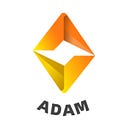According to media reports, the total pledged amount of the Ethereum 2.0 network has exceeded 9.8 million ETH, and the number of network verifiers of the Ethereum Beacon Chain network has exceeded 300,000. Meanwhile, ethereum gas fee have dropped to 0.0039 ETH, or about $10.26, down more than 80% from $52 on Jan. 10 and the lowest level since late August 2021.
The Ethereum network has been widely criticized for its long-term congestion and high gas fees. The continuous drop in the gas fee recently shows that the effect of the on-chain expansion scheme of Ethereum 2.0 is relatively significant, and of course some of the credit needs to be attributed to other off-chain expansion schemes. At present, off-chain scaling schemes can be mainly divided into three types: state channels, side chains and off-chain computing.
The so-called Statu Channel is essentially a mechanism that transfers the on-chain interaction of the blockchain to the off-chain. The principle of the Statu Channel is to interact off-chain and clear on-chain, which is equivalent to Bitcoin’s Lightning Network, avoiding putting every small transaction on the chain, just submitting the final state to the chain.
Sidechain protocols are a way to allow digital assets to be transferred between the main chain and sidechains, providing more possibilities for developing new applications of blockchain technology. Deploying sidechain technology on the main chain means that users can use their existing assets to access the new cryptocurrency system. The existence of cross-chain not only increases the scalability of the blockchain, but also solves the problem of different public chains. The problem of “data silos” is caused by difficulties in transactions between them.
The core of off-chain computing: off-chain computing and on-chain verification. The basic idea is to move all kinds of transactions that were originally processed on the chain to off-chain processing, while only the verified part is retained on the chain to indirectly improve the chain. data processing capability.
Recently, ADAMoracle has launched a new off-chain computing solution based on its powerful data transmission and computing capabilities.
The conventional off-chain computing scheme involves two roles: verifier and prover (Prover), the former is located on the chain, the latter is located off-chain, the prover can be in a piece of information (that is, a transmission process from off-chain to on-chain) ) to convince the verifier.
The oracle has natural advantages for off-chain computing. It itself is a bridge connecting on-chain and off-chain, and it can complete the cross-border transmission and verification of data more professionally. ADAMoracle brings together high-quality nodes from many countries and regions in Europe, America, and Asia to form a global wide-area node network, which enables oracles to realize unbounded interstellar network computing.
ADAMoracle combines powerful data transmission and data computing capabilities, making its practicality unprecedentedly improved. ADAMoracle extends the capabilities of blockchain networks by providing greater scalability, cost-effectiveness, and privacy through off-chain computing. ADAMoracle off-chain computing can also provide important functionality. Examples include fair trade sorting, random access, and intelligent automation.
At present, a variety of off-chain computing solutions have achieved results. With the addition of ADAMoracle off-chain computing, this off-chain expansion solution may be extended to Ethereum and even the entire blockchain ecosystem. When developers are able to combine strong data access capabilities with the power of ADAMoracle, the hybrid smart contracts they build can also begin to reach their full potential.
